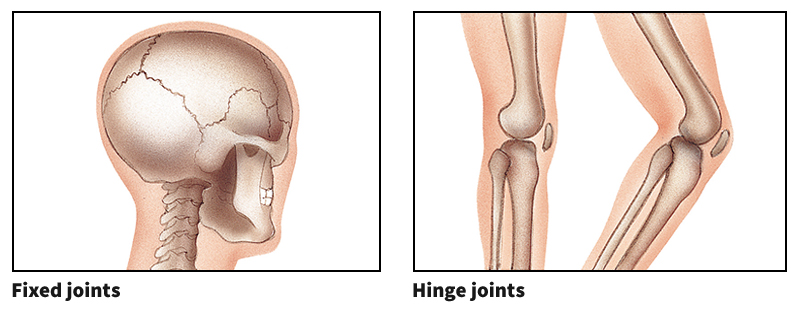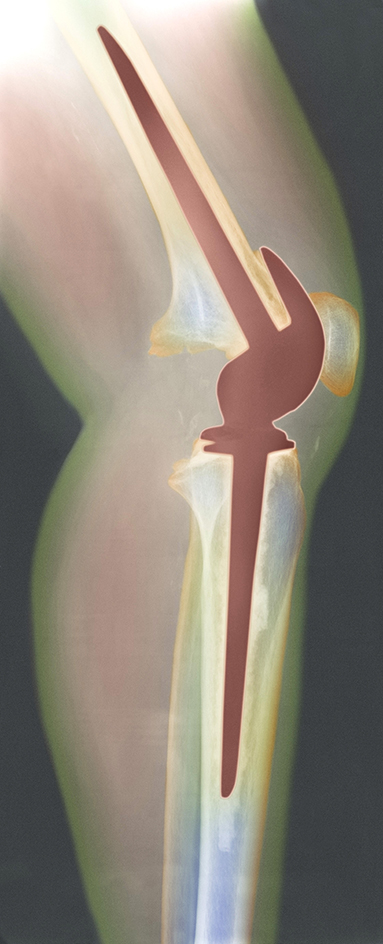Joint is the place at which two or more bones meet in the skeleton of the body. This place is also called an articulation. Joints may be fixed or movable. Fixed joints are seams between bones that lie directly against each other, or are separated only by a thin layer of connective tissue. In case of a blow or an accident, these joints may absorb just enough shock to keep the bones from breaking. The joints of the cranium (covering of the brain) are fixed and protect the brain.
There are three main kinds of movable joints: (1) hinge joints, (2) pivot joints, and (3) ball-and-socket joints. Hinge joints are those that permit a forward and backward motion in one plane, like the motion of a door on its hinges. The joints at the knee and fingers are modified hinge joints. Pivot joints give a rotating motion, such as the movement of the head from side to side. The elbow has both hinge and pivot joints. Ball-and-socket joints allow the greatest freedom of movement. These joints are made up of a large round end of a long bone that fits into the hollow of another bone. The hip and shoulder have ball-and-socket joints. The arms of the body can move more freely than the legs because of the way that the joints are arranged, and because the shoulder blade is only loosely attached to the chest wall.

Movable joints are protected from wear and tear in several ways. A smooth layer of cartilage (gristle) covers the ends of bones that move over one another. The elasticity of cartilage breaks the force of sudden shocks. Also, the smooth quality of the cartilage makes a joint move easily. A liquid called synovial fluid keeps the joints moist and lubricated. See Cartilage.
Bones are held together at the joint by strong, fibrous tissues called ligaments that attach above and below the joint. At the hip, a number of ligaments circle the bone like a collar to keep the joint in place.
Joints are often sprained or dislocated. A sprain occurs when the ligaments around a joint are torn or badly stretched. Serious sprains are painful, and if neglected may result in instability of the joint. Dislocated joints should be treated as soon as possible by a physician. Inflammation of the joints may result from infections or from such disorders as arthritis.

